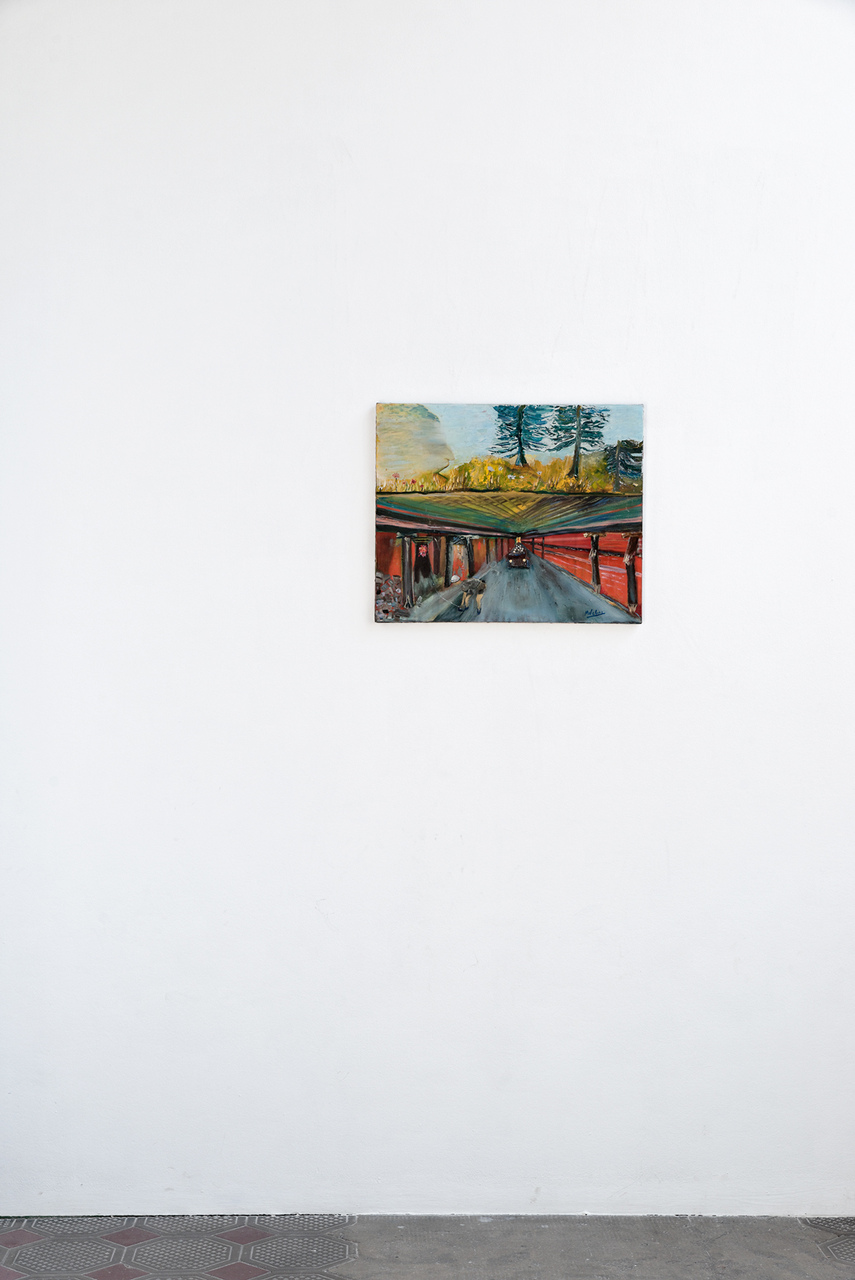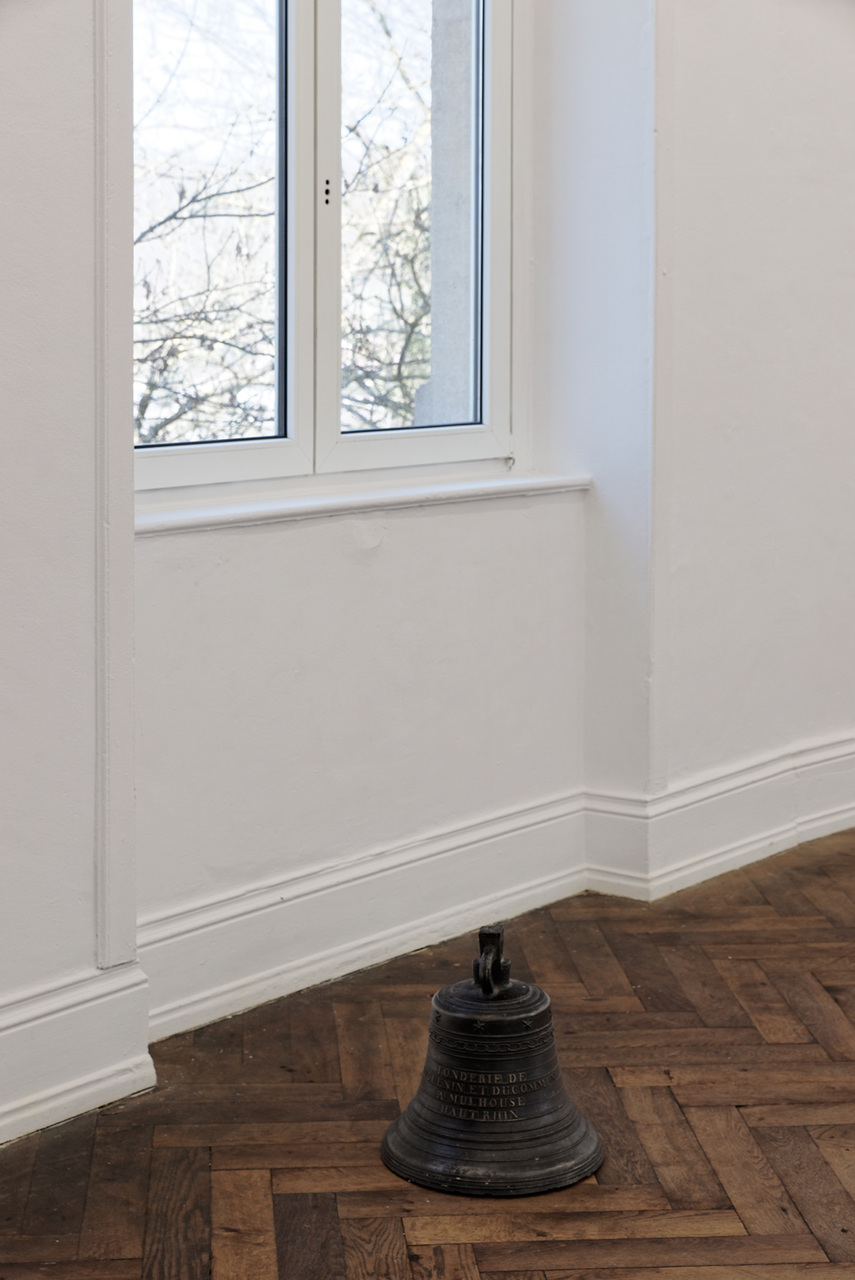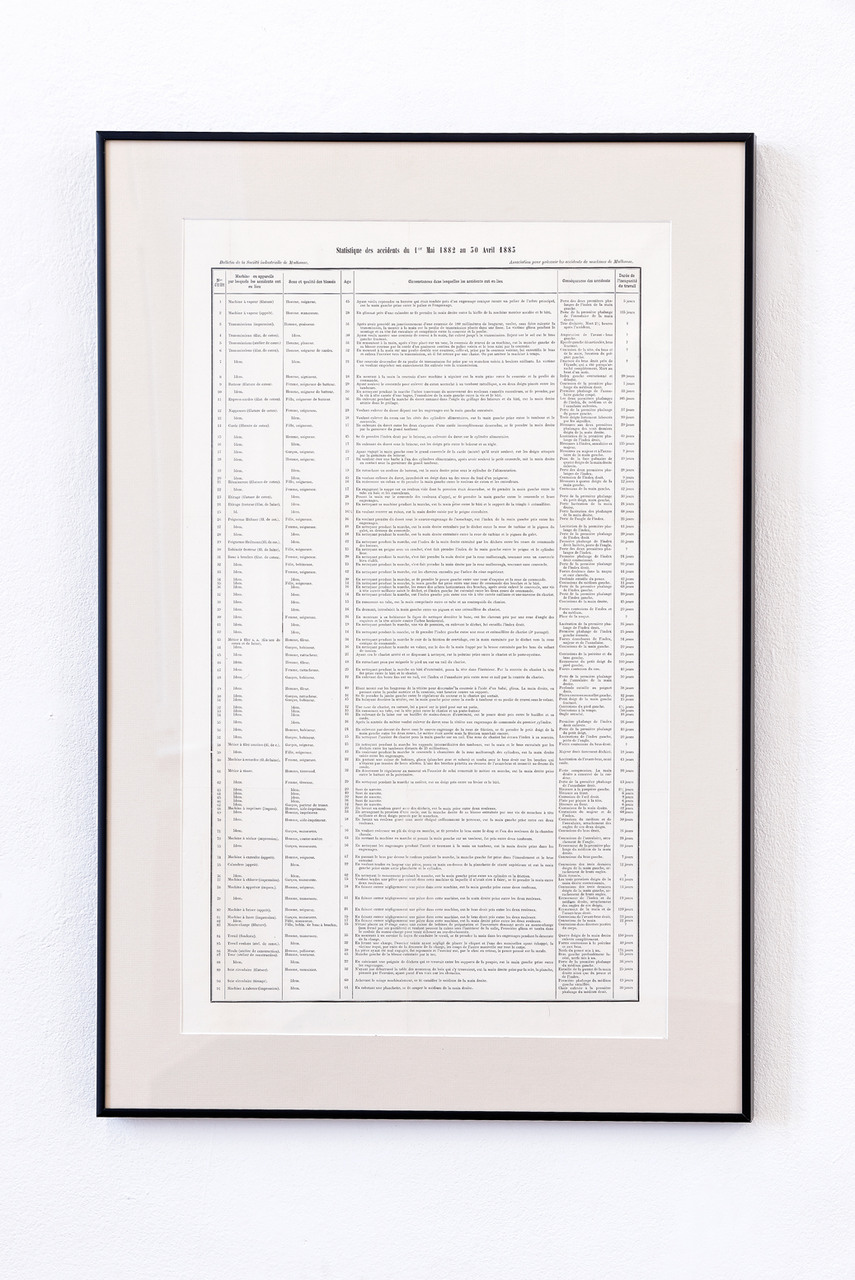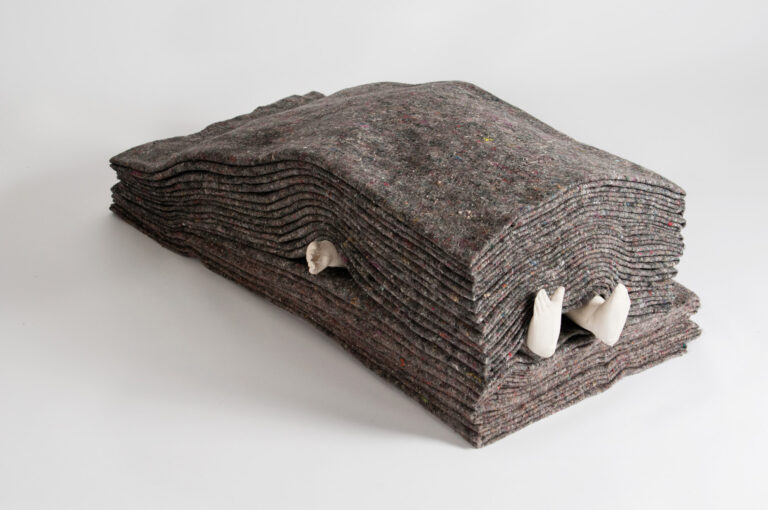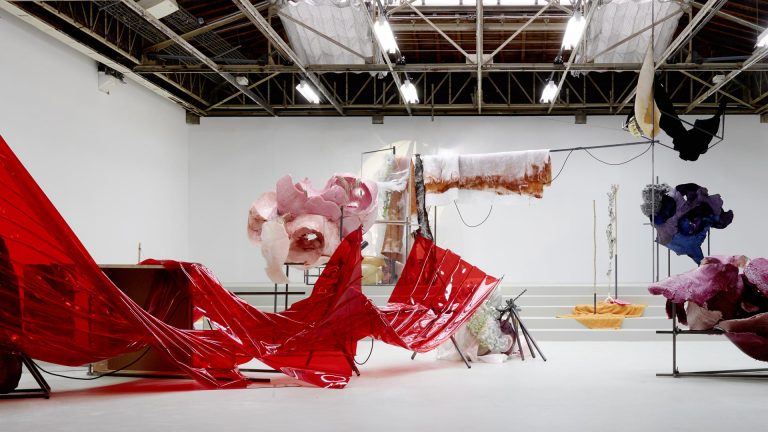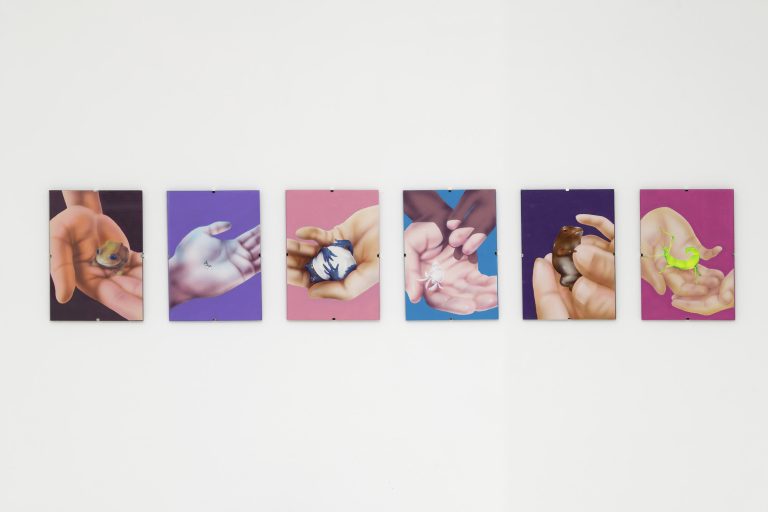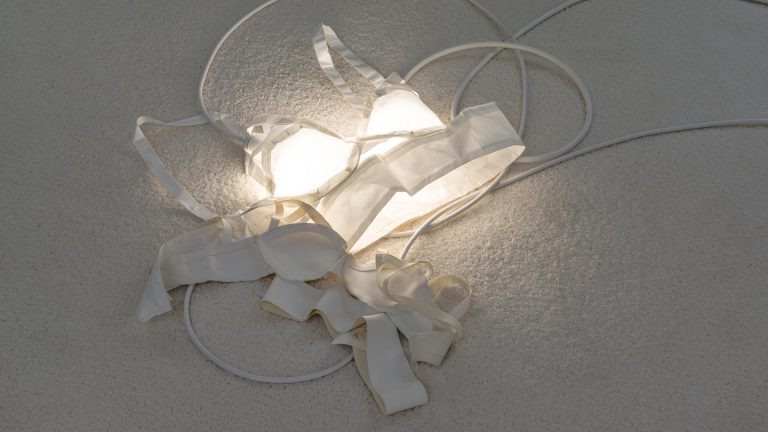Artist: Sophie Nys
Exhibition title: Ein Tisch ohne Brot ist ein Brett
Curated by: Elf Turpin
Venue: CRAC Alsace, Altkirch, France
Date: March 1 – May 17, 2015
Photography: Aurélien Mole. Images courtesy of the artist and CRAC Alsace
Ein Tisch ohne Brot ist ein Brett, ein Tisch ohne Brot ist ein Brett, ein Tisch ohne Brot ist ein Brett, ein Tisch ohne Brot ist ein Brett…here I am endlessly repeating this sentence which is the title of this solo show of Sophie Nys, as if the better to grasp its mechanics and substance. For this statement, which not only acts as an image, informs both the challenges of Sophie Nys’ work in general and the preoccupations at work in this exhibition in particular. Ein Tisch ohne Brot ist ein Brett, which literally means “a table without bread is a board”, is the adaptation of a Russian saying which deals with both the object in its simplest material apparatus and the history it raises. Ein Tisch ohne Brot ist ein Brett, and, you see, the words are pleasant to utter, is therefore this relentless conceptual game, at once economical and rudimentary, which addresses a whole swathe of history, that of bread and its absence, and by extension the history of the crises and famines that have traversed Europe.
For if Sophie Nys is interested in history, and how it is manufactured and represented, she invariably approaches it through sources—objects, archives, documents—where she inquisitively observes the negative space, almost the unconscious and the repressed, operating by association of ideas and formal analogies. So, strictly speaking, it is not a matter of bread in this show. Rather, it involves its absence in periods of crisis, for example during the wars that have raged in this part of the world—Altkirch and its surroundings, where the art centre is located today—and the alternative recipes or practices which the inhabitants of this part of the world have managed to invent.
In particular, Sophie Nys has focused on a certain number of objects and works which have to do with the region’s industrial past and more especially on the fgure of the worker—a social and political body which she likens to documents coming from other geographical, historical and artistic felds. In this way, and for the frst time in an exhibition, the artist brings in her original sources—at once a source of inspiration for her work, and a source in the historical sense of the term—which she has collected in various museums and sites in the region, and which she updates in arrangements and assemblages of critical gestures and forms.
So the body of the Schweissdissi, “the man who sweats” will rub shoulders indirectly with the fgures of Patti Smith, Joseph Beuys and Carl Andre, whose 120 heat-resistant bricks arranged in a rectangle will encounter the damaged fngers of workers whose hands are caught in the production tool, which they never laid their hands on, which will meet the sad gaze of Dumbo, a tiny navvy, the underground journeys of Herculean miners, an industrial painting, a punitive sculpture, ingenious tables-cum-chairs or clandestine popular practices, and together produce unlikely sequences of events.
– History without critique is inert; criticism without history is aimless , said Hal Foster. 1
– Ein Tisch ohne Brot ist ein Brett, added Sophie Nys.
E. T. February 2015


